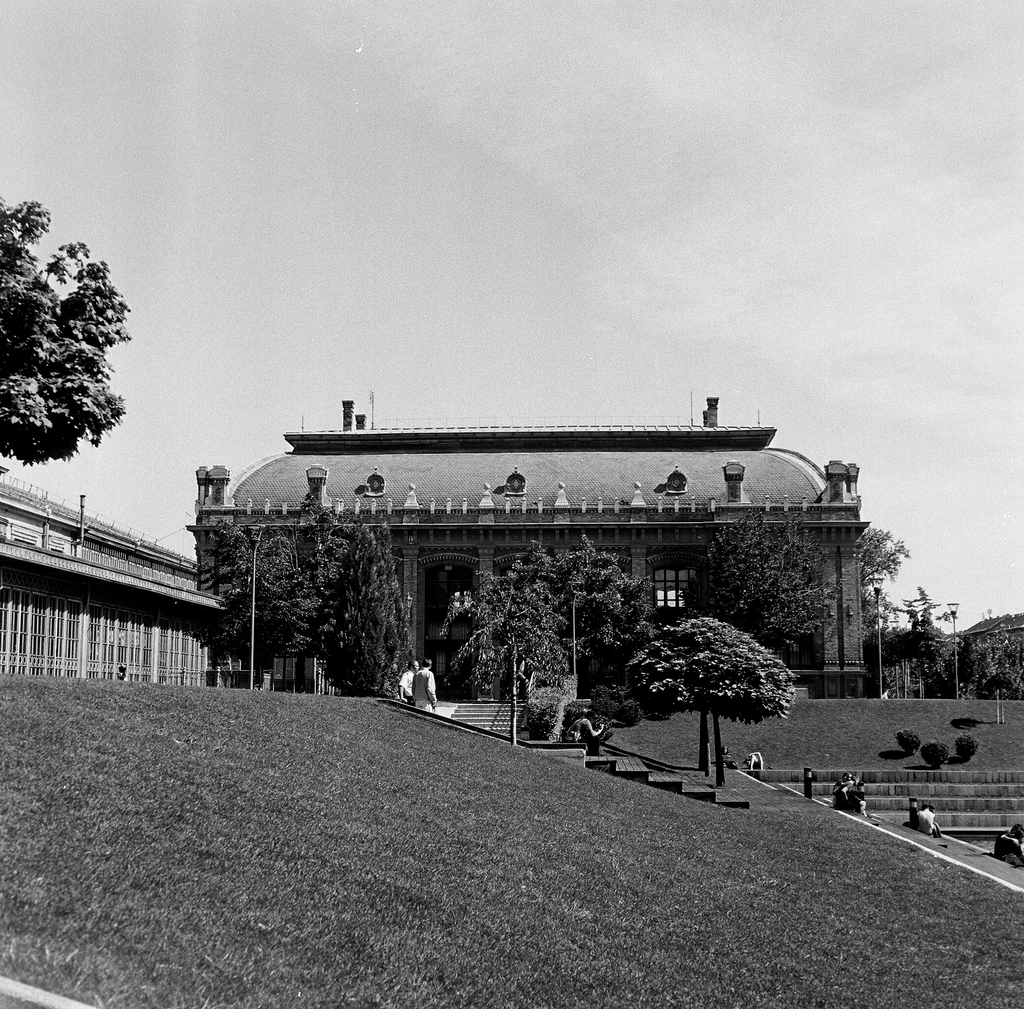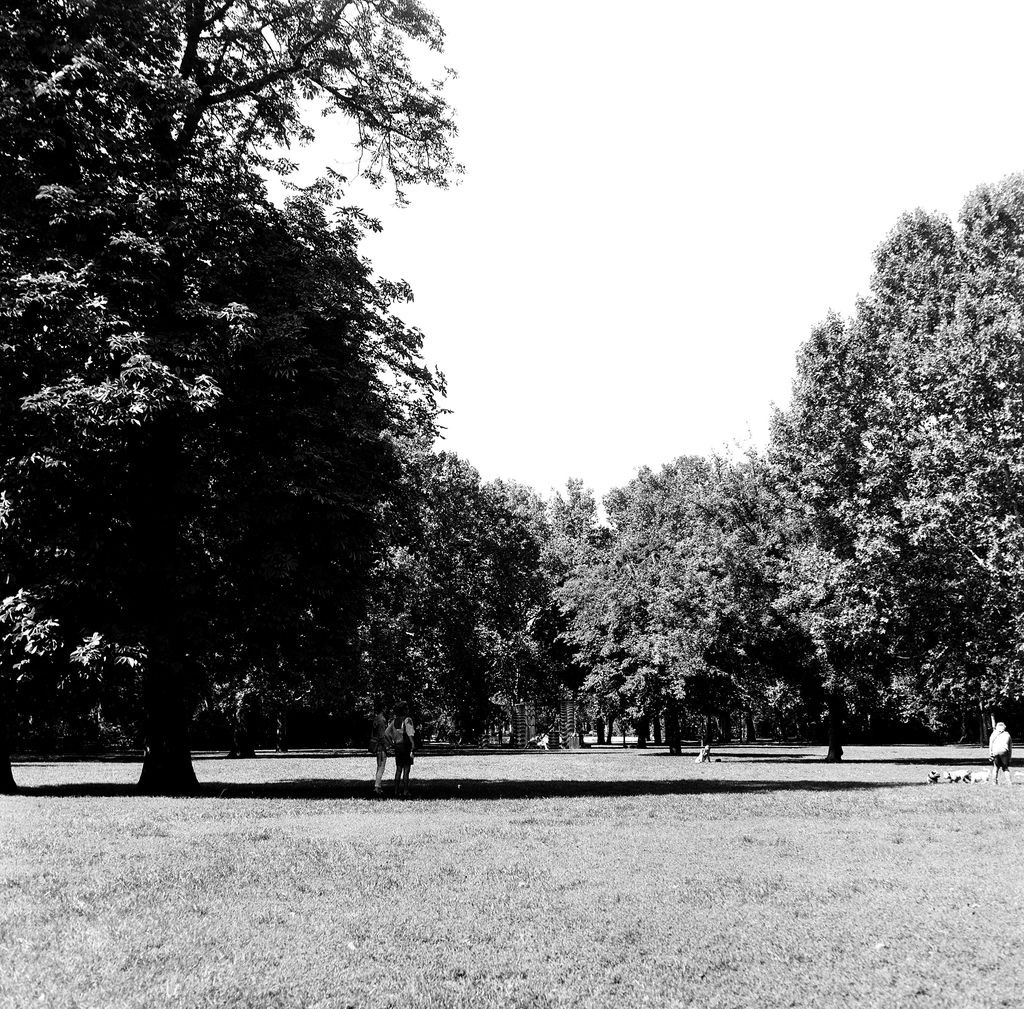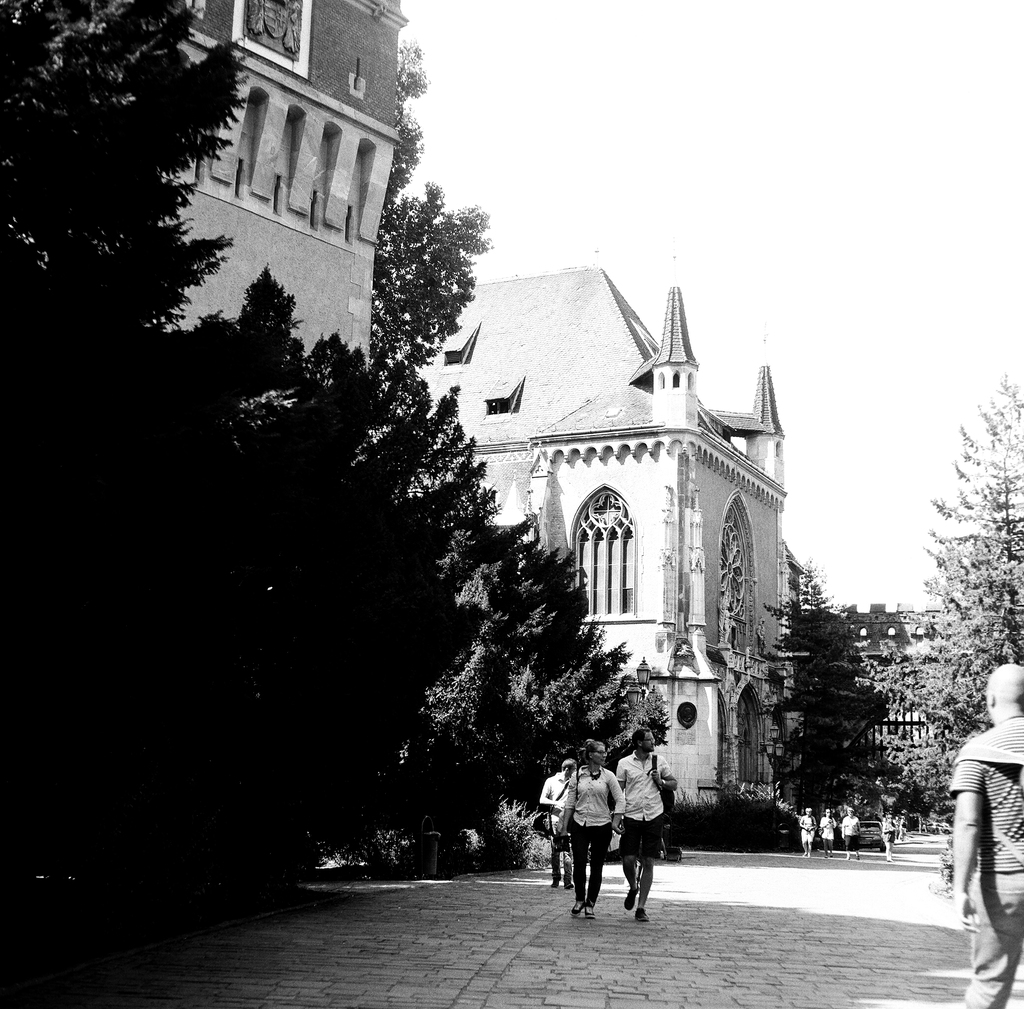| View previous topic :: View next topic |
| Author |
Message |
uddhava


Joined: 22 Aug 2012
Posts: 3073
Location: Hungary
Expire: 2021-06-21
|
 Posted: Wed Sep 03, 2014 4:35 pm Post subject: Flexaret IVa, Meopta Belar 3.5/80, Fomapan 100 Posted: Wed Sep 03, 2014 4:35 pm Post subject: Flexaret IVa, Meopta Belar 3.5/80, Fomapan 100 |
 |
|
uddhava wrote:
Picked up photos today. Please make comments, criticisms and suggestions as I am new to this camera and film.
I was able to get 13 exposures, but I am only showing 11.
#1

#2

#3

#4

#5

#6

#7

#8

#9

#10

#11
 |
|
| Back to top |
|
 |
kds315*


Joined: 12 Mar 2008
Posts: 16544
Location: Weinheim, Germany
Expire: 2021-03-09
|
 Posted: Wed Sep 03, 2014 5:12 pm Post subject: Posted: Wed Sep 03, 2014 5:12 pm Post subject: |
 |
|
kds315* wrote:
Man, this is excellent!!
_________________
Klaus - Admin
"S'il vient a point, me souviendra" [Thomas Bohier (1460-1523)]
http://www.macrolenses.de for macro and special lens info
http://www.pbase.com/kds315/uv_photos for UV Images and lens/filter info
https://www.flickr.com/photos/kds315/albums my albums using various lenses
http://photographyoftheinvisibleworld.blogspot.com/ my UV BLOG
http://www.travelmeetsfood.com/blog Food + Travel BLOG
https://galeriafotografia.com Architecture + Drone photography
Currently most FAV lens(es):
X80QF f3.2/80mm
Hypergon f11/26mm
ELCAN UV f5.6/52mm
Zeiss UV-Planar f4/60mm
Zeiss UV-Planar f2/62mm
Lomo Уфар-12 f2.5/41mm
Lomo Зуфар-2 f4.0/350mm
Lomo ZIKAR-1A f1.2/100mm
Nikon UV Nikkor f4.5/105mm
Zeiss UV-Sonnar f4.3/105mm
CERCO UV-VIS-NIR f1.8/45mm
CERCO UV-VIS-NIR f4.1/94mm
CERCO UV-VIS-NIR f2.8/100mm
Steinheil Quarzobjektiv f1.8/50mm
Pentax Quartz Takumar f3.5/85mm
Carl Zeiss Jena UV-Objektiv f4/60mm
NYE OPTICAL Lyman-Alpha II f1.1/90mm
NYE OPTICAL Lyman-Alpha I f2.8/200mm
COASTAL OPTICS f4/60mm UV-VIS-IR Apo
COASTAL OPTICS f4.5/105mm UV-Micro-Apo
Pentax Ultra-Achromatic Takumar f4.5/85mm
Pentax Ultra-Achromatic Takumar f5.6/300mm
Rodenstock UV-Rodagon f5.6/60mm + 105mm + 150mm
|
|
| Back to top |
|
 |
uddhava


Joined: 22 Aug 2012
Posts: 3073
Location: Hungary
Expire: 2021-06-21
|
 Posted: Wed Sep 03, 2014 5:37 pm Post subject: Posted: Wed Sep 03, 2014 5:37 pm Post subject: |
 |
|
uddhava wrote:
| kds315* wrote: |
| Man, this is excellent!! |
Thank you very much. Glad you like them.
Seems the camera is working properly also, so that is a relief. |
|
| Back to top |
|
 |
luisalegria


Joined: 07 Mar 2008
Posts: 6627
Location: San Francisco, USA
Expire: 2018-01-18
|
 Posted: Thu Sep 04, 2014 9:19 pm Post subject: Posted: Thu Sep 04, 2014 9:19 pm Post subject: |
 |
|
luisalegria wrote:
Works very well, sharp, no flare.
All seem to have perfect exposure or close to it.
#3 is very nice indeed, great example of what B&W can do with dynamic range.
You used "sunny 16" rule ?
_________________
I like Pentax DSLR's, Exaktas, M42 bodies of all kinds, strange and cheap Japanese lenses, and am dabbling in medium format/Speed Graphic work. |
|
| Back to top |
|
 |
mmelvis

Joined: 24 May 2010
Posts: 1326
Location: Florida,USA
Expire: 2015-05-09
|
 Posted: Fri Sep 05, 2014 12:22 am Post subject: Posted: Fri Sep 05, 2014 12:22 am Post subject: |
 |
|
mmelvis wrote:
The 3rd picture is wonderful. Where was it taken? |
|
| Back to top |
|
 |
uddhava


Joined: 22 Aug 2012
Posts: 3073
Location: Hungary
Expire: 2021-06-21
|
 Posted: Fri Sep 05, 2014 11:49 am Post subject: Posted: Fri Sep 05, 2014 11:49 am Post subject: |
 |
|
uddhava wrote:
| luisalegria wrote: |
Works very well, sharp, no flare.
All seem to have perfect exposure or close to it.
#3 is very nice indeed, great example of what B&W can do with dynamic range.
You used "sunny 16" rule ? |
Thank you, Luis.
Yes it seemed to work well, although the film winding knob was pretty stiff.
I did not try to compensate for the probably slower shutter speeds as you suggested and used the sunny
16 rule which I had written down on a index card.
I notice in some of the photos the sky shows as grey and in most it is white. Is that normal?
Also how can I show more details in the shaded areas of the photo?
I did receive a couple of filters with the camera. Both are yellow, one is lighter yellow though.
What would be the benefit of using those?
And how do I us the magnifier for the view finder?
| mmelvis wrote: |
| The 3rd picture is wonderful. Where was it taken? |
Thank you. That was taken in a park behind the Hero's square in Budapest. |
|
| Back to top |
|
 |
luisalegria


Joined: 07 Mar 2008
Posts: 6627
Location: San Francisco, USA
Expire: 2018-01-18
|
 Posted: Fri Sep 05, 2014 5:59 pm Post subject: Posted: Fri Sep 05, 2014 5:59 pm Post subject: |
 |
|
luisalegria wrote:
If these are scans you got from the shop, there could be several things going on.
And here are several ways to get more or less contrast.
1. Film development. How the film is developed (chemicals, temperature, timing, etc.) can give different results with different films. It can give high or low contrast on the negative, more or less grain on the negative, etc. Also because of the dynamic range of B&W you will get useful detail even in overexposed o underexposed negatives, though with lower contrast, and different development can compensate.
This is an enormous subject.
2. Scanning. I assume they are using an auto-exposure system on the scanner. If so it is tuned remarkably well, because these are really quite good on the whole for automated scanning. What happens though is that because it is compensating for greater or lesser exposure on the negative you will get different results. You get some very high contrast images and some lower contrast images. Most of yours seem to have high contrast. If you were able to scan your own images you could adjust how a particular frame is scanned and increase or decrease effective exposure and contrast, and even different treatment of shadow and highlight areas through exposure curves and similar tools.
3. Filters are very important for B&W photography. They control how much light of a certain spectrum gets to the film. For outdoor photography in bright sun you will usually want to have at least a medium yellow filter, because it compensates for excessive sensitivity of B&W film to blue and UV. This leads to a somewhat unnatural effect, where skies and light objects in bright sun are too light. With a yellow filter skies are a bit darker and highlights are a bit less glaring. Red filters can make a very dark and dramatic sky- depending on the angle of the sun, etc. Again, there is a tremendous amount of info on the web about this. Try your yellow filter. Assume your film speed is 1/2 of what it is to compensate (With yellow filter on , ISO 100 becomes ISO 50).
_________________
I like Pentax DSLR's, Exaktas, M42 bodies of all kinds, strange and cheap Japanese lenses, and am dabbling in medium format/Speed Graphic work. |
|
| Back to top |
|
 |
uddhava


Joined: 22 Aug 2012
Posts: 3073
Location: Hungary
Expire: 2021-06-21
|
 Posted: Fri Sep 05, 2014 6:56 pm Post subject: Posted: Fri Sep 05, 2014 6:56 pm Post subject: |
 |
|
uddhava wrote:
Thank you for all that information Luis! |
|
| Back to top |
|
 |
uddhava


Joined: 22 Aug 2012
Posts: 3073
Location: Hungary
Expire: 2021-06-21
|
 Posted: Thu Nov 13, 2014 8:53 pm Post subject: Posted: Thu Nov 13, 2014 8:53 pm Post subject: |
 |
|
uddhava wrote:
Here are some more photos using Fomapan 400. I had a hard time focusing because of the darker weather. I used a
yellow filter for probably the first three photos. When it became too cloudy and dark I took it off.
I straightened a couple of them out and increased the contrast.
#1

#2

#3

#4

#5
 |
|
| Back to top |
|
 |
Lloydy


Joined: 02 Sep 2009
Posts: 7785
Location: Ironbridge. UK.
Expire: 2022-01-01
|
 Posted: Thu Nov 13, 2014 10:28 pm Post subject: Posted: Thu Nov 13, 2014 10:28 pm Post subject: |
 |
|
Lloydy wrote:
I'm sure I must have seen the original post before - I love the 3rd shot of the river and bridge. and can't think why I didn't comment on it before?
It's a lovely series of pictures altogether, very nice.
_________________
LENSES & CAMERAS FOR SALE.....
I have loads of stuff that I have to get rid of, if you see me commenting about something I have got and you want one, ask me.
My Flickr https://www.flickr.com/photos/mudplugga/
My ipernity -
http://www.ipernity.com/home/294337 |
|
| Back to top |
|
 |
uddhava


Joined: 22 Aug 2012
Posts: 3073
Location: Hungary
Expire: 2021-06-21
|
 Posted: Thu Nov 13, 2014 10:45 pm Post subject: Posted: Thu Nov 13, 2014 10:45 pm Post subject: |
 |
|
uddhava wrote:
| Lloydy wrote: |
I'm sure I must have seen the original post before - I love the 3rd shot of the river and bridge. and can't think why I didn't comment on it before?
It's a lovely series of pictures altogether, very nice. |
Thank you.
I struggled with the last set. I think I felt too rushed. With this camera I really have to take my time.
I like the 3rd shot too. That day I had more time and I was looking more carefully for the good shot. |
|
| Back to top |
|
 |
|
|
|
You cannot post new topics in this forum
You cannot reply to topics in this forum
You cannot edit your posts in this forum
You cannot delete your posts in this forum
You cannot vote in polls in this forum
|
